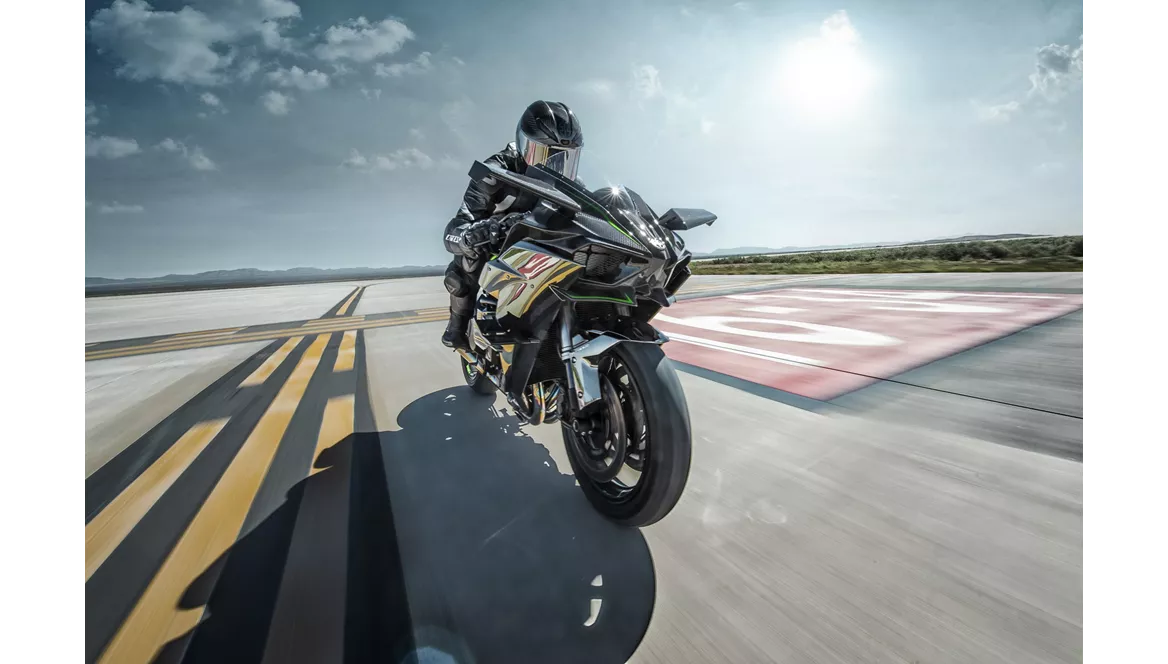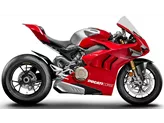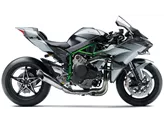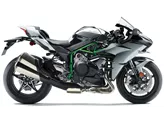Kawasaki Ninja H2R 2015 vs. Yamaha R1 2015

Kawasaki Ninja H2R 2015

Yamaha R1 2015
Overview - Kawasaki Ninja H2R 2015 vs Yamaha R1 2015
The Kawasaki Ninja H2 R 2015 and the Yamaha R1 2015 are both high-performance supersport motorcycles with similar engine displacements of 998cc. However, there are several key differences between the two models.
In terms of engine power, the Kawasaki Ninja H2 R takes the lead with an impressive 310 HP compared to the Yamaha R1's 200 HP. This gives the Ninja H2 R a significant advantage in terms of acceleration and top speed. The Ninja H2 R also boasts a higher torque of 165 Nm compared to the R1's 112.4 Nm, providing better low-end power and acceleration.
The Kawasaki Ninja H2 R features a DOHC (Double Overhead Camshaft) engine with 4 cylinders and 4 valves per cylinder, while the Yamaha R1 also has a DOHC engine with the same number of cylinders and valves. Both bikes have a compression ratio of 13, indicating high-performance engines.
In terms of suspension, the Ninja H2 R is equipped with a telescopic fork front suspension, while the R1 features an Upside-Down telescopic fork. Both suspension systems offer excellent handling and stability, but the choice between the two may come down to personal preference.

Kawasaki Ninja H2R 2015
The chassis of the Ninja H2 R is made of steel and has a tubular frame, while the R1 features an aluminum frame with a Deltabox design. The choice of materials and frame design can affect the overall weight and handling characteristics of the bike.
Both motorcycles are equipped with double disk brakes at the front, providing excellent stopping power. They also have the same tire dimensions, with a width of 120mm at the front and 190mm at the rear, and a diameter of 17 inches for both tires.
In terms of dimensions and weights, the Ninja H2 R has a slightly longer wheelbase of 1450mm compared to the R1's 1405mm. The seat height of the Ninja H2 R is 830mm, while the R1 has a slightly higher seat height of 855mm. The Ninja H2 R also has a higher kerb weight of 216kg compared to the R1's 199kg.
Both motorcycles have a fuel tank capacity of 17 liters, providing a decent range for long rides.
In terms of strengths, the Ninja H2 R is praised for its quality of workmanship, power, torque, traction, and surprisingly low maintenance requirements. It offers exceptional acceleration and engine control, and is known for its high-quality details and superb paintwork. The Ninja H2 R also boasts excellent brakes and great stability in all situations.

Yamaha R1 2015
On the other hand, the Yamaha R1 is praised for its crazy sound, rev-happy engine with a strong peak, and great racing feeling in the saddle. It also features a superior electronics package and high-quality workmanship.
However, both bikes have their weaknesses. The Ninja H2 R has been criticized for its engine response at the first few degrees of throttle and understeer at high speeds. It also requires higher maintenance compared to normal bikes and its sound, while loved by some, can cause problems on race tracks.
The Yamaha R1 has been noted for its torque sag in the middle and stability issues in the braking zone.
In conclusion, the Kawasaki Ninja H2 R 2015 and the Yamaha R1 2015 are both powerful and high-performance motorcycles with their own strengths and weaknesses. The Ninja H2 R offers superior power and acceleration, while the R1 provides a great racing experience and high-quality electronics. Ultimately, the choice between the two will depend on individual preferences and priorities.
Technical Specifications Kawasaki Ninja H2R 2015 compared to Yamaha R1 2015
Pros and Cons in comparison
Pros and Cons in comparison
Kawasaki Ninja H2R 2015

The Kawasaki crew had a vision. To build a motorbike that creates excitement and pushes into completely new dimensions in terms of performance and technology. This vision has succeeded. The 326 hp machine can be piloted by experienced riders without acute danger to their lives. The intensity of the acceleration is indescribable. But the perfect overall appearance of the motorbike with countless high-quality details is also thrilling. Compared to normal motorbikes, the H2 R has its weaknesses in throttle response and line precision at high speeds. All in all, the H2 R is the most fascinating motorbike of all time for the test pilot and can be recommended to petrol junkies with a clear conscience. The H2 R is available for the price of a well-equipped German-made premium estate - only with "a little" more adrenaline.
Yamaha R1 2015

The new R1 is a big hit and no longer compares to the previous model. This was considered a good country road bike and heavy investments had to be made for excursions to the race track. Now it is the other way round. The new R1 has been developed with a clear focus on the race track. The electronics package seems outstanding, technology freaks will get their money's worth. Yamaha fans have to buy it, they finally have a worthy motorbike. The R1 has slight weaknesses when braking - it becomes a little unstable here. If you want to buy a ready-made racing bike without having to work on the chassis, you'd better go for the R1M. The Öhlins electronic suspension works perfectly and has no weaknesses. For pure racetrack use, the second weakness of the R1 can easily be ironed out. The torque hole in the middle can be easily ironed out with a new mapping.
Price Comparison Avarage Market Price Kawasaki Ninja H2R vs Yamaha R1
There are a few key differences between a Kawasaki Ninja H2 R 2015 and a Yamaha R1 2015. It takes less time to sell a Yamaha R1 with 76 days compared to 2,298 days for the Kawasaki Ninja H2 R. Since model year 2015 1000PS.de editors have written 13 reviews for the Kawasaki Ninja H2 R and 80 reviews for the Yamaha R1 since model year 2005. The first review for the Kawasaki Ninja H2 R was published on 11/4/2014 and now has more than 413,000 views. This compares to more than 3,900 views for the first review on Yamaha R1 published on 4/28/2003.
























